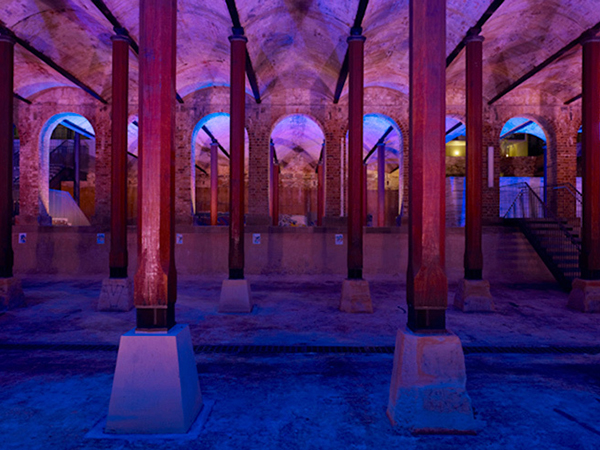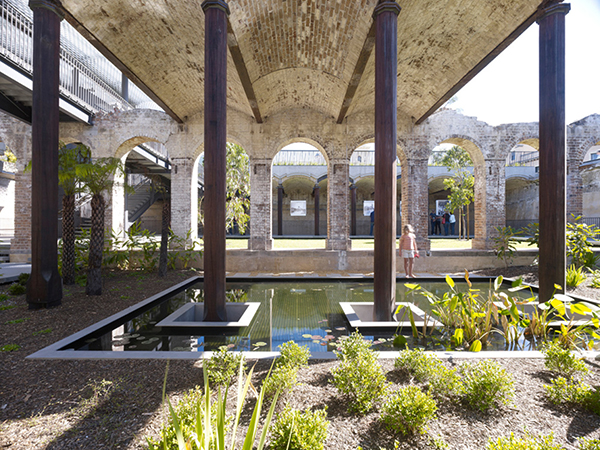When TZG and JMD were commissioned to convert the Paddington Reservoir into an urban park, the general expectation was that the site would be capped off and a brand new arrangement built on top.
However, we were captivated by the possibilities of revealing the 19th century structures as a ruin through which members of the public could wander, taking in the dramatic spaces and play of light across the remnants of historic walls and vaults.
Listed as a site of state heritage significance, the Paddington Reservoir was originally constructed in two stages, completed in 1866 and 1878.
The water chambers were built below street level with a grassed park above, opened to the public in the 1930’s. The operational life of the reservoir ceased in 1899 and the site was used as a workshop and garage until 1990 when roof collapses forced its closure.

We believed the concept for the project was embodied in the existing artefact. An accessible sunken garden and pond, surrounded by a raised pre-cast concrete boardwalk, has been inserted within the conserved ruin of the western chamber of the former reservoir. The edges of the ruin are contained by concrete up-stands in such a way as to amplify the distinctive curved characteristics of the original brick vaults. The Victorian tree-fern garden hints at the era in which the Reservoir was originally built.

The eastern chamber has been conserved with new timber columns and a waterproof concrete structure over, stabilising the brickwork and forming the base for the new landscaped park above.
Two lightweight roofs float above the reservoir, signalling the main entry points to the park. The lightness of the roofs act as a counterpoint to the solid earthiness of the masonry vaults, while there is a whimsical reference to the older masonry mortar joints in the staggered pattern of the metal grid.
A restricted pallet of three materials – steel, aluminium and concrete were chosen as contemporary partners for the historic brick, cast iron and timber, united as they are in their raw industrial expression. This quality, crucial to sustaining the memory of the original purpose of the structure, is softened by the status given to the planting and also by the overt invitation, implicit in the walkways, to explore the whole park.

